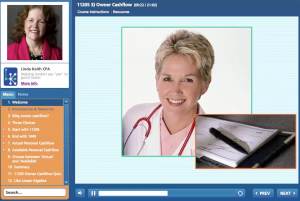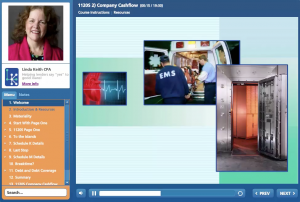Nick asks:
If we have non-pass-through interest income from a K-1, do we give the individual credit for this as if it were cash flow?
Linda says:
Nick, there is no such thing as non-pass-thru interest from a K-1. But since you are a lender with a focus on tax return analysis, I am pretty sure I know what you are actually asking.
What is pass-thru income from a K-1?
Pass-thru income from a K-1, by definition, is not cash flow. However, not all income from a pass-thru entity is noncash. Here are a few of the pass-thru income items a lender, underwriter or analyst might see on a 1040 if the owner of the pass-thru (S-Corporation, Partnership or multi-owner Limited Liability Company (LLC)) entity:
- Ordinary Income (Goes to 1040 Schedule E, Page Two)
- Interest Income (Goes to 1040 Schedule B)
- Capital Gains Income/Loss (Goes to 1040 Schedule D)
When is income on a 1040 from a k-1 not pass-thru?
Never. That’s easy! The confusion comes from your inclusion of ‘from a k-1’ in your question.
There certainly can be actual income reported in a 1040 from a pass-thru entity the borrower/guarantor owns. These can be:
- Rent paid by the entity to the borrower/guarantor (Reported on 1040 Schedule E, Page One)
- Interest income on a note/contract receivable the entity is paying to the owner/guarantor (Reported on 1040 Schedule B)
- Wages if the entity is an S-Corporation and the owner/guarantor works for the company (Reported on 1040 Line 7)
How can you tell if the interest income is cash flow or not?
If you have non-pass-through interest income (meaning you see it on the return of the owner (1040 Schedule B if an individual)) but not on the K-1 itself, then the owner is actually receiving cash from the company. The owner may have lent money to the company or sold something to the company and is getting payments over time.
I recommend you ask for a copy of the note/contract receivable to determine the full amount they are receiving (interest and principal) and how much longer it will continue. Then you can decide to add it to cash flow if continuing long enough.
There may be a Form 6252 also included in the return. (This is not required unless the taxpayer sold an asset at a gain to the company). If so, check Line 21 for principal received for the year. Then you’ll know how much they received in total payments (add the Schedule B interest to the Form 6252 principal), but still will not know how much longer they’ll be receiving it.
More on K-1s and Pass-thru Entities
In Lender’s Online Training we have three online modules on each of the pass-through entities, 1065 and 1120S. That is six in all! The third for each is specifically on the K-1s, although all three are necessary to get the full picture.
Click here to enroll in Lenders Online Training to access all modules on tax return and financial statement analysis.



